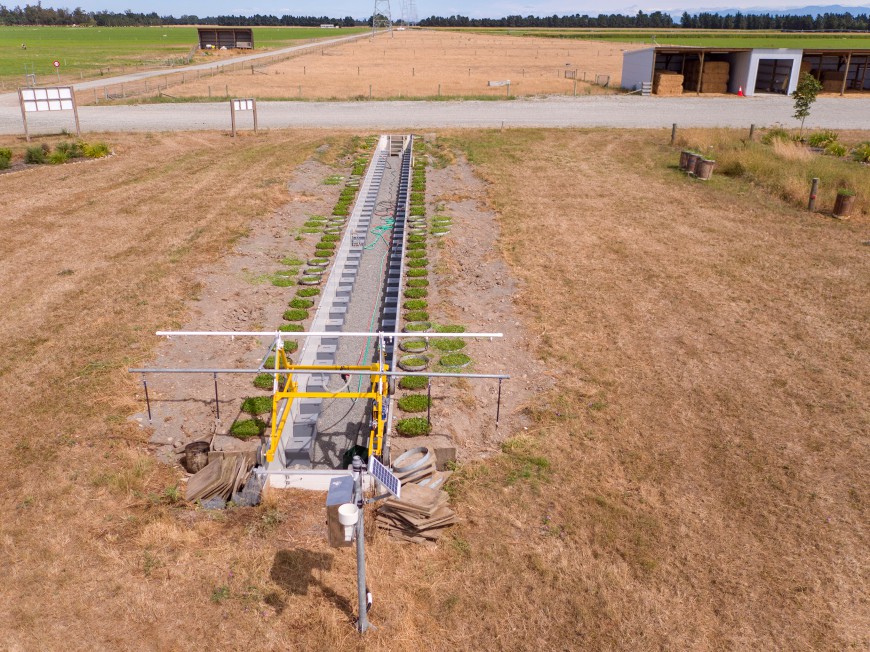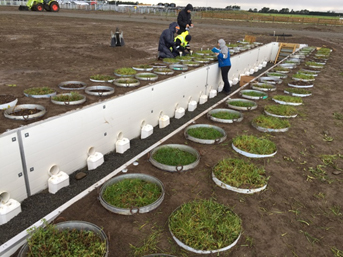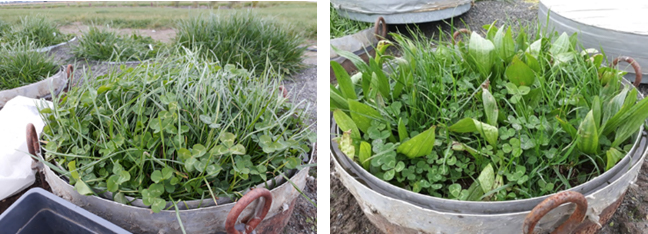Sward species and cattle diet effects on nitrogen losses
In this section
-
Reducing nitrogen losses from farms
- Measuring and modelling paddock water inputs and losses on stony soils
- Annual net inputs and losses of carbon and nitrogen for irrigated and non-irrigated lucerne
- Carbon inputs to reduce nitrogen losses
- Sward species and cattle diet effects on nitrogen losses
- Contrasting microbial activities in topsoil and subsoil
- Identifying soils with low nitrogen losses
- Mauriora Systems Framework: A guide and process for decision-making
- Recommendations for farmers
Key findings
- To examine whether different sward species affect nitrogen leaching, we applied cattle urine to three sward types: perennial ryegrass/white clover, perennial ryegrass/white clover/plantain and Italian ryegrass/white clover/plantain
- We found that the rate of nitrogen leaching reduced the most under the Italian ryegrass/white clover/plantain mix (reduction by 24%)
- To examine whether cattle diet affected nitrogen leaching, we compared losses under sward with urine addition from cattle fed on fodder beet and on ryegrass/clover
- We found that leaching from urine derived from cattle fed with fodder beet was 64% lower than that from urine from cattle fed on ryegrass/clover

Aerial view of the lysimeter facility (Bradley White)
Different plant species in the sward mix take up varying amounts of available nitrogen, and this affects the losses of nitrogen leached. Furthermore, some crops fed to cattle can potentially inhibit nitrogen losses.
William Talbot, with collaborators at Lincoln University, Plant and Food Research, and Manaaki Whenua - Landcare Research studied the effects of different species on nitrogen leaching losses. We applied cattle urine to three sward types: perennial ryegrass/white clover, perennial ryegrass/white clover/plantain and Italian ryegrass/white clover/plantain.
We found that, under perennial ryegrass/white clover/plantain, nitrogen leaching decreased by 14% compared to the amount from perennial ryegrass/white clover. similarly, under Italian ryegrass/white clover/plantain, nitrogen leaching decreased by 24%. We attributed this to differences in plant nitrogen uptake and its effects on reduced nitrogen available for leaching.


Lysimeter array for replicate measurements of leaching losses for different sward mixes treated with cattle urine. The lysimeters are 0.5 m in diameter and 0.7 m deep (David Whitehead upper). Swards of ryegrass/clover (left) and ryegrass/clover with plantain to determine the effects of sward composition on nitrogen leaching (William Talbot lower)
We also conducted an experiment to test the seasonal effects of cattle diet on nitrogen losses. This experiment was conducted in winter because plant growth, and therefore nitrogen uptake, are lower in the winter months. The experiment simulated a grazing event by comparing leaching losses from perennial ryegrass/white clover to fodder beet/bare fallow after application of urine from animals. Nitrogen leaching losses were high beneath the fodder beet/fallow (335–345 kg N/ha) compared to leaching under ryegrass/clover (55–121 kg N/ha). Additionally, application of urine from cattle fed with fodder beet resulted in 64% lower nitrogen leaching losses than leaching from application of urine from cattle fed on ryegrass/clover. It is likely that urine from cattle fed on fodder beet contains an inhibitor that reduces nitrogen losses.
These results demonstrate that different plant species can affect the rates of nitrogen leaching, so different mixes of grassland swards and fodder crops could be used to manipulate nitrogen inputs and reduce nitrogen losses from farms. The effects are most pronounced in winter and the finding highlights the need to maintain active winter growth to maximise nitrogen uptake and reduce leaching losses.
For more details go to
Talbot WD, Malcolm BJ, Cameron KC, Di HJ, and Whitehead D. 2020. Cattle diet and winter plant growth effects on nitrogen losses from cattle urine patches. Nutrient Cycling in Agroecosystems 116:365-379. https://doi.org/10.1007/s10705-020-10050-4
Talbot WD, Malcolm BJ, Cameron K, Di HJ, and Whitehead D. Effect of cattle urine deposition timing and pasture composition on nitrogen leaching losses. Soil Use and Management (submitted)
